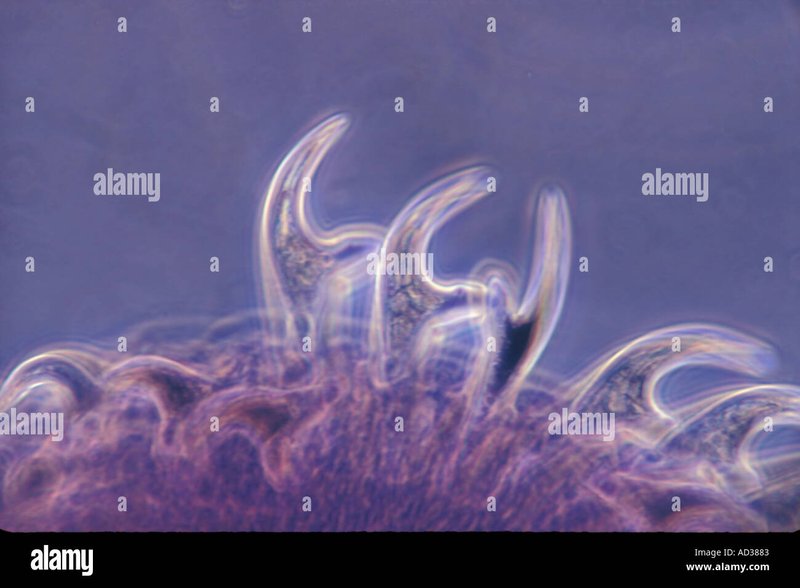
So, what exactly is a guppy tapeworm? It’s a type of parasite that often inhabits the bodies of fish, particularly guppies. Picture a whimsical underwater world where these tapeworms are like tiny stowaways, hitching a ride and showcasing their life cycles in a classroom setting. By incorporating guppy tapeworms into science demonstrations, educators can engage students in hands-on learning while explaining complex topics in a relatable way. Let’s dive deeper into how to effectively use these little creatures in your classroom.
Why Choose Guppy Tapeworms for Science Demonstrations?
Using guppy tapeworms in science demonstrations can provide several educational benefits. First off, they spark curiosity. Kids are naturally interested in what they can’t see, and observing the life cycle of a tapeworm can be a real eye-opener. It’s a unique way to grasp concepts like parasitism and symbiotic relationships. Think of it as a living textbook, where students can witness biology in action rather than just reading about it.
Additionally, guppy tapeworms help illustrate biodiversity and ecosystem dynamics. By understanding how these parasites fit into the broader ecological picture, students can develop a deeper appreciation for all forms of life. As they interact with these organisms, they learn to recognize the fine balance within ecosystems, making it clear that every creature plays a role—no matter how small.
Finally, using tapeworms can help enhance students’ observational skills. Watching these creatures under a microscope allows for a hands-on learning experience that textbooks simply can’t provide. Students can ask questions, make hypotheses, and explore the scientific method in a genuine way.
Setting Up Your Guppy Tapeworm Demonstration
Before diving in, it’s essential to ensure you have the right setup for your guppy tapeworm demonstration. Start by gathering your materials. You’ll need a microscope, a few guppies, and a safe habitat for them. It’s also good to have a fish tank stocked with plants and substrate to mimic a natural environment.
Be sure to check the local regulations regarding keeping live specimens. Some areas may have specific guidelines on using live animals in classrooms. Once you’ve confirmed that everything is good to go, you can set up the tank and allow the fish to acclimate.
When preparing the demonstration, it’s helpful to first explain the life cycle of the guppy tapeworm. Drawing a simple diagram on the board can make it easier for students to visualize the stages. Once students understand what to look for, they can start examining the guppies under the microscope, searching for tapeworms. As they do, encourage questions and discussions about what they observe.
Teaching Key Concepts Through Observation
Now that your students know what to look for, it’s time to dive into some key concepts. One exciting topic is parasitism. Guppy tapeworms thrive inside their fish hosts, often without causing immediate harm. However, they can also lead to health issues over time, illustrating an important dynamic in nature.
As your students observe the tapeworms, encourage them to discuss the pros and cons of these relationships. For example, what happens to the guppy if the tapeworm population grows too large? This discussion can lead to a broader conversation about balance in ecosystems and the importance of keeping populations in check.
Another engaging concept is the life cycle of the guppy tapeworm. By illustrating the different stages—from eggs to adults—you can help students understand growth and development in living organisms. Make it interactive by having them sketch the life cycle as they observe it. This activity not only reinforces their learning but also allows them to engage creatively with the subject matter.
Addressing Common Challenges
When using guppy tapeworms in demonstrations, you might run into a few common challenges. One of the biggest hurdles is ensuring that the creatures are visible to the students. Sometimes, tapeworms can be hard to spot, especially if the guppies are lively.
To troubleshoot this, remind students to be patient and careful when observing. If they have difficulty finding the tapeworms, suggest they take turns using the microscope, as sharing the experience can be a great learning opportunity. You could also provide simple guidelines on how to look for the parasites more effectively, such as focusing on the guppies’ midsection.
Another issue could be the ethical considerations of using live specimens. Some students may feel uncomfortable about examining live animals. It’s essential to create an atmosphere of respect for all life forms. You might want to discuss the importance of understanding ecosystems and the role of each organism in teaching students empathy and responsibility in their scientific explorations.
Alternatives to Live Specimens
If you decide that using guppy tapeworms might not be the best fit for your class, there are alternatives. Pre-recorded videos or documentaries can provide insights into the life of these creatures without needing to use live organisms. These resources can still offer rich visual content while making the subject matter engaging.
You might also consider using microscopic slides that showcase the life cycle of guppy tapeworms. This way, students can still observe the organisms without the need for live specimens. Using digital resources or simulations can also allow students to engage with the subject matter in fun and interactive ways.
Remember, the objective is to foster curiosity and understanding. Whether through live demonstrations or alternative resources, what matters is that students are learning and connecting with science.
Incorporating guppy tapeworms into school science demonstrations can transform the way students learn about biology. By observing these fascinating creatures, students get a front-row seat to the complex interactions that make up our ecosystems. It’s a hands-on approach that makes learning dynamic and engaging.
Through this simple yet effective demonstration, students not only grasp essential scientific concepts but also develop observational skills and empathy for living organisms. So, as you plan your next science lesson, consider the guppy tapeworm—who knows what exciting discoveries await your students? By exploring the enchanting world of these tiny creatures, you’ll ignite their curiosity and passion for science.

